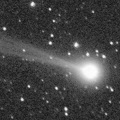
|
It brightened very rapidly as predicted, and brightened up to 6.1 mag in early January (Jan. 7, J.P.Navarro Pina). It will approach to the earth down to 0.08 a.u. to the earth in mid February, and it will be observable at 6 mag in good condition. It will appear in the morning sky soon, then it keeps observable in good condition after mid February.
Date(TT) R.A. (2000) Decl. Delta r Elong. m1 Best Time(A, h)
Jan. 28 20 39.14 -8 20.8 0.212 0.777 9 7.0 5:34 (272,-12)
Feb. 4 19 40.60 1 12.1 0.128 0.875 28 6.7 5:30 (276, 9)
|
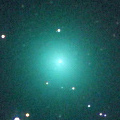
|
It brightened rapidly up to 6.8 mag (Jan. 6, Katsumi Yoshimoto). It approached to the sun down to 0.3 a.u. on Jan. 14. Now it is not observable. It is not observable after this in the Northern Hemisphere. In the Southern Hemisphere, it will appear in the extremely low sky in the evening in late February.
Date(TT) R.A. (2000) Decl. Delta r Elong. m1 Best Time(A, h)
Jan. 28 20 34.61 -32 12.5 1.411 0.515 14 8.9 5:34 (294,-23)
Feb. 4 21 27.87 -33 36.1 1.531 0.664 17 10.1 18:57 ( 64,-23)
|
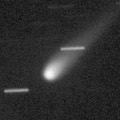
|
Now it is 10.6 mag (Jan. 24, Juan Jose Gonzalez). It is expected to brighten up to 7 mag in summer. In the Northern Hemisphere, it keeps observable in good condition until the highlight while the comet will be brightening. In the Southern Hemisphere, it will be observable in spring, but it keeps very low for a while.
Date(TT) R.A. (2000) Decl. Delta r Elong. m1 Best Time(A, h)
Jan. 28 15 27.55 44 27.8 2.103 2.397 94 10.1 5:34 (233, 71)
Feb. 4 15 40.19 44 44.0 2.013 2.335 96 9.9 5:30 (230, 73)
|
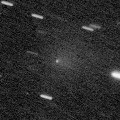
|
Already bright as 11.0 mag (Jan. 26, Thomas Lehmann). It will pass the perihelion on Mar. 10. In the Northern Hemisphere, it keeps observable in the evening sky until late February while the comet will be brightening up to 8.5 mag. In the Southern Hemisphere, it will appear in the morning sky in late March at 8 mag, then it keeps observable while the comet will be fading.
Date(TT) R.A. (2000) Decl. Delta r Elong. m1 Best Time(A, h)
Jan. 28 23 31.33 5 60.0 1.303 0.981 48 10.8 18:51 ( 75, 30)
Feb. 4 23 41.44 6 41.8 1.234 0.861 43 10.3 18:57 ( 80, 26)
|
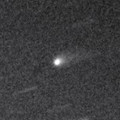
|
Now it is 12.2 mag (Jan. 24, Seiichi Yoshida). It is expected to brighten up to 7 mag in spring. But it locates somewhat low at the high light.
Date(TT) R.A. (2000) Decl. Delta r Elong. m1 Best Time(A, h)
Jan. 28 16 14.83 -22 51.8 2.158 1.908 62 11.0 5:34 (327, 24)
Feb. 4 16 35.76 -23 23.9 2.020 1.825 64 10.6 5:30 (328, 24)
|
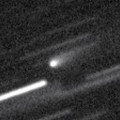
|
Now it is 13.7 mag (Jan. 24, Seiichi Yoshida). It will brighten up to 12 mag from winter to spring. In the Northern Hemisphere, it keeps observable while the comet is brightening gradually. But it will be unobservable in late February. In the Southern Hemisphere, it keeps observable for a long time after this.
Date(TT) R.A. (2000) Decl. Delta r Elong. m1 Best Time(A, h)
Jan. 28 16 59.59 -17 24.1 1.483 1.182 52 12.5 5:34 (314, 23)
Feb. 4 17 33.20 -18 55.9 1.438 1.131 51 12.3 5:30 (313, 20)
|
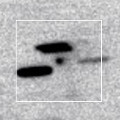
|
Now it is 13.5 mag (Jan. 23, Piotr Guzik). It will approach to the earth down to 0.14 a.u. from March to April. It is expected to brighten up to 5-6 mag. It may brighten furthermore in outburst. In the Northern Hemisphere, it keeps observable in excellent condition. In the Southern Hemisphere, it will not be observable for about one month around the highlight. But it keeps observable in good condition except for that period.
Date(TT) R.A. (2000) Decl. Delta r Elong. m1 Best Time(A, h)
Jan. 28 9 30.69 10 2.0 0.454 1.429 165 14.6 1:03 ( 0, 65)
Feb. 4 9 32.18 12 5.7 0.388 1.372 173 13.9 0:37 ( 0, 67)
|

|
Now it is not observable. It will appear in the morning sky in March.
Date(TT) R.A. (2000) Decl. Delta r Elong. m1 Best Time(A, h)
Jan. 28 20 32.55 -19 53.7 6.853 5.869 2 13.9 5:34 (283,-17)
Feb. 4 20 38.37 -19 28.4 6.842 5.868 8 13.9 5:30 (285,-13)
|
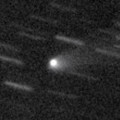
|
Now it is 13.7 mag (Jan. 24, Juan Jose Gonzalez). It will brighten up to 14 mag from winter to spring, and it will be observable in excellent condition in the Northern Hemisphere. It keeps low in the Southern Hemisphere.
Date(TT) R.A. (2000) Decl. Delta r Elong. m1 Best Time(A, h)
Jan. 28 12 6.16 28 27.3 1.682 2.456 132 14.1 3:38 ( 0, 83)
Feb. 4 12 6.74 29 19.6 1.646 2.465 137 14.1 3:11 ( 0, 84)
|
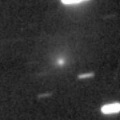
|
Now it is bright as 14.4 mag (Jan. 14, Thomas Lehmann). It will be observable at 11 mag for a long time from 2017 to 2018. Now it is observable in excellent condition in the Southern Hemisphere. But it keeps low for a while in the Northern Hemisphere.
Date(TT) R.A. (2000) Decl. Delta r Elong. m1 Best Time(A, h)
Jan. 28 2 46.60 -31 49.5 5.300 5.246 81 14.8 18:51 ( 8, 23)
Feb. 4 2 47.29 -30 26.1 5.326 5.193 76 14.8 18:57 ( 16, 23)
|

|
It has not been observed yet in this apparition. The condition of this apparition is worst. It will brighten up to 10 mag in spring, but not observable at all.
Date(TT) R.A. (2000) Decl. Delta r Elong. m1 Best Time(A, h)
Jan. 28 21 17.69 -7 21.5 2.458 1.521 13 15.2 18:51 ( 85, -5)
Feb. 4 21 37.97 -6 3.3 2.410 1.461 12 14.9 18:57 ( 88, -7)
|

|
Now it is 14.3 mag (Dec. 31, Jakub Cerny). Distant object, but it keeps observable at 13-14 mag for a long time from 2015 to 2016.
Date(TT) R.A. (2000) Decl. Delta r Elong. m1 Best Time(A, h)
Jan. 28 0 58.45 -3 17.5 5.545 5.197 64 14.9 18:51 ( 49, 39)
Feb. 4 1 3.31 -2 50.4 5.657 5.214 58 14.9 18:57 ( 56, 35)
|
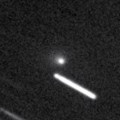
|
Now it is 14.8 mag (Dec. 31, Yuji Ohshima). It keeps 15 mag until spring. But it is already unobservable in the Southern Hemisphere. It will be getting lower gradually after this also in the Northern Hemisphere.
Date(TT) R.A. (2000) Decl. Delta r Elong. m1 Best Time(A, h)
Jan. 28 0 9.46 10 31.3 2.025 1.733 58 15.1 18:51 ( 73, 40)
Feb. 4 0 25.89 12 26.4 2.061 1.720 56 15.1 18:57 ( 78, 38)
|
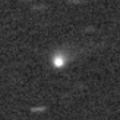
|
Now it is 15.7 mag (Jan. 4, T. Ikemura, H. Sato). It will brighten up to 14 mag from spring to summer in 2017. It locates somewhat low in the Northern Hemisphere. The perihelion distance increased from 2.4 a.u. to 2.9 a.u. in this apparition. So it will not be bright as before.
Date(TT) R.A. (2000) Decl. Delta r Elong. m1 Best Time(A, h)
Jan. 28 15 46.21 -16 42.2 3.378 3.178 69 15.5 5:34 (330, 33)
Feb. 4 15 53.84 -17 12.3 3.271 3.165 75 15.4 5:30 (335, 34)
|

|
It brightened up to 11 mag from spring to summer in 2016. It is appearing in the morning sky again. It will be observable at 16-17 mag in good condition from spring to summer.
Date(TT) R.A. (2000) Decl. Delta r Elong. m1 Best Time(A, h)
Jan. 28 18 29.67 -21 21.3 3.162 2.375 31 15.4 5:34 (301, 5)
Feb. 4 18 42.89 -21 10.5 3.154 2.416 35 15.5 5:30 (302, 7)
|
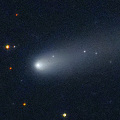
|
It brightened up to 11-12 mag from summer to autumn. Now it is fading. But it is bright as 13.6 mag still now (Jan. 24, Seiichi Yoshida).
Date(TT) R.A. (2000) Decl. Delta r Elong. m1 Best Time(A, h)
Jan. 28 12 31.26 -26 14.6 1.629 2.157 108 15.4 4:03 ( 0, 29)
Feb. 4 12 30.57 -26 57.6 1.600 2.206 114 15.5 3:35 ( 0, 28)
|
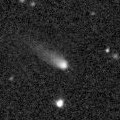
|
Now it is 15.8 mag (Jan. 1, Ken-ichi Kadota). It will brighten up to 12-13 mag and will be observable in good condition in summer. It ia already unobservable in the Southern Hemisphere. It is observable until the end of February in the Northern Hemisphere.
Date(TT) R.A. (2000) Decl. Delta r Elong. m1 Best Time(A, h)
Jan. 28 0 8.51 14 24.7 3.856 3.479 60 15.4 18:51 ( 77, 42)
Feb. 4 0 7.84 13 59.9 3.933 3.436 53 15.4 18:57 ( 83, 35)
|

|
Now it is 17.2 mag (Jan. 6, Hiroshi Abe). It will brighten up to 10 mag in summer, and it will be observable in excellent condition in the Southern Hemisphere. It locates low in the Northern Hemisphere.
Date(TT) R.A. (2000) Decl. Delta r Elong. m1 Best Time(A, h)
Jan. 28 14 45.55 -8 9.2 1.922 2.106 86 15.7 5:34 (345, 46)
Feb. 4 14 57.26 -9 2.5 1.809 2.069 90 15.5 5:30 (349, 45)
|
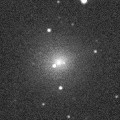
|
It brightened up to 11-12 mag in autumn. Now it is fading. But it is bright as 13.9 mag still now (Jan. 24, Seiichi Yoshida).
Date(TT) R.A. (2000) Decl. Delta r Elong. m1 Best Time(A, h)
Jan. 28 13 48.27 -15 49.8 1.781 2.141 97 15.5 5:19 ( 0, 39)
Feb. 4 13 52.29 -16 18.1 1.743 2.190 103 15.7 4:56 ( 0, 39)
|
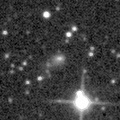
|
Now it is 16.8 mag (Oct. 20, Kunihiro Shima). It will be observable at 13 mag for a long time from 2017 to 2018. It is appearing in the morning sky again in the Northern Hemisphere.
Date(TT) R.A. (2000) Decl. Delta r Elong. m1 Best Time(A, h)
Jan. 28 19 0.55 -3 24.6 5.852 5.012 28 15.6 5:34 (282, 11)
Feb. 4 19 3.12 -2 41.1 5.759 4.974 34 15.6 5:30 (285, 15)
|
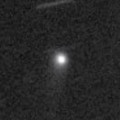
|
Now it is 15.3 mag (Dec. 29, Kunihiro Shima). It is already unobservable in the Southern Hemisphere. It will be unobservable temporarily from February to April also in the Northern Hemisphere. It will brighten up to 14 mag from summer to next winter. Then it will be observable in excellent condition in the Northern Hemisphere. In the Southern Hemisphere, it will be observable in the very low sky only from May to June.
Date(TT) R.A. (2000) Decl. Delta r Elong. m1 Best Time(A, h)
Jan. 28 23 3.19 -0 20.9 4.590 3.875 39 15.7 18:51 ( 75, 20)
Feb. 4 23 7.17 0 59.1 4.622 3.840 33 15.7 18:57 ( 80, 15)
|

|
Now it is 15.6 mag (Jan. 9, J. L. Martin). It will be observable at 16-17 mag in good condition from autumn to winter. It locates low in the Southern Hemisphere.
Date(TT) R.A. (2000) Decl. Delta r Elong. m1 Best Time(A, h)
Jan. 28 6 53.25 27 29.5 2.840 3.747 153 15.7 22:21 ( 0, 82)
Feb. 4 6 49.40 27 36.8 2.885 3.740 145 15.8 21:50 ( 0, 83)
|
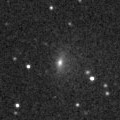
|
Now it is 15.7 mag (Dec. 30, Sandor Szabo). It keeps 16-17 mag for a long time from 2016 to 2019. It keeps locating near by the equator.
Date(TT) R.A. (2000) Decl. Delta r Elong. m1 Best Time(A, h)
Jan. 28 9 15.98 2 30.8 8.697 9.639 162 15.9 0:48 ( 0, 57)
Feb. 4 9 14.34 2 47.0 8.673 9.634 166 15.9 0:19 ( 0, 58)
|

|
It kept bright 12 mag for a long time from autum in 2015 to summer in 2016. Now it is fading. It has already faded dwon to 15.6 mag (Jan. 6, Hiroshi Abe). It is appearing in the morning sky.
Date(TT) R.A. (2000) Decl. Delta r Elong. m1 Best Time(A, h)
Jan. 28 17 14.29 -4 49.5 4.727 4.199 52 16.1 5:34 (302, 30)
Feb. 4 17 17.56 -5 18.0 4.688 4.249 58 16.2 5:30 (306, 33)
|
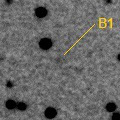
|
It was observed at 16 mag from spring to summer in 2016. It will be observable at 16 mag also in 2017 from winter to spring.
Date(TT) R.A. (2000) Decl. Delta r Elong. m1 Best Time(A, h)
Jan. 28 17 19.72 -9 1.2 3.795 3.248 49 16.1 5:34 (304, 26)
Feb. 4 17 28.73 -7 47.2 3.728 3.259 54 16.1 5:30 (306, 29)
|
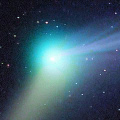
|
It brightened up to 6 mag from last autumn to last winter. Now it is fading. It has already faded down to 16.0 mag (Jan. 1, Yuji Ohshima). It is observable in good condition in the Northern Hemisphere. It is not observable after this in the Southern Hemisphere.
Date(TT) R.A. (2000) Decl. Delta r Elong. m1 Best Time(A, h)
Jan. 28 2 55.73 48 0.2 5.303 5.651 105 16.1 18:51 (162, 76)
Feb. 4 2 54.46 47 9.2 5.475 5.717 99 16.3 18:57 (141, 73)
|

|
Appearing in the morning sky. Now it is fading. But it must be bright as 16 mag still now.
Date(TT) R.A. (2000) Decl. Delta r Elong. m1 Best Time(A, h)
Jan. 28 16 26.15 -20 55.4 2.857 2.512 59 16.3 5:34 (323, 25)
Feb. 4 16 35.44 -20 54.4 2.843 2.583 64 16.4 5:30 (326, 26)
|
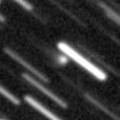
|
Now it is 16.5 mag (Dec. 29, Sandor Szabo). It will brighten up to 15 mag and will be observable in good condition from autum to winter in 2017. In the Northern Hemisphere, it keeps observable in good condition for a long time while the comet will be brightening. It is not observable until summer in the Southern Hemisphere.
Date(TT) R.A. (2000) Decl. Delta r Elong. m1 Best Time(A, h)
Jan. 28 1 54.01 42 58.9 4.861 5.027 94 16.4 18:51 (122, 71)
Feb. 4 1 52.90 41 36.6 4.950 4.997 87 16.5 18:57 (115, 65)
|
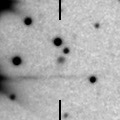
|
Now it is 16.4 mag (Jan. 3, T. Ikemura, H. Sato). It keeps 16 mag for a long time from 2017 to 2018.
Date(TT) R.A. (2000) Decl. Delta r Elong. m1 Best Time(A, h)
Jan. 28 9 10.93 -6 59.0 4.871 5.771 153 16.6 0:43 ( 0, 48)
Feb. 4 9 4.53 -5 52.3 4.827 5.752 157 16.5 0:09 ( 0, 49)
|

|
Now it is 16.5 mag (Dec. 26, A. Diepvens). It keeps 16.5 mag from 2016 to 2017. In the Northern Hemisphere, it keeps observable in good condition for a long time. In the Southern Hemisphere, it will never be observable again.
Date(TT) R.A. (2000) Decl. Delta r Elong. m1 Best Time(A, h)
Jan. 28 18 14.34 38 40.3 6.579 6.253 66 16.6 5:34 (246, 41)
Feb. 4 18 20.41 39 45.1 6.548 6.256 68 16.6 5:30 (246, 44)
|
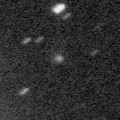
|
Now it is 16.8 mag (Jan. 6, D. Buczynski). It is expected to brighten up to 9 mag in summer in 2018. In the Northern Hemisphere, it keeps observable until 2018 summer while the comet will be brightening. In the Southern Hemisphere, it is hardly observable in 2017, but it will be observable in good condition in 2018.
Date(TT) R.A. (2000) Decl. Delta r Elong. m1 Best Time(A, h)
Jan. 28 18 39.47 44 54.9 6.305 6.023 69 16.8 5:34 (237, 38)
Feb. 4 18 44.84 45 2.1 6.238 5.968 69 16.7 5:30 (238, 41)
|
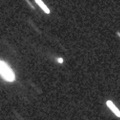
|
Now it is 17.1 mag (Jan. 9, ATLAS-HKO, Haleakala). It brightened rapidly, and became brighter than originally expected. It keeps 17 mag until 2017. In the Northern Hemisphere, it keeps observable in excellent condition for a long time. It is not observable in the Southern Hemisphere.
Date(TT) R.A. (2000) Decl. Delta r Elong. m1 Best Time(A, h)
Jan. 28 13 35.13 58 38.9 6.900 7.358 114 16.9 5:06 (180, 66)
Feb. 4 13 29.79 59 17.4 6.869 7.365 116 16.9 4:33 (180, 66)
|
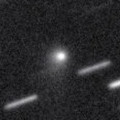
|
It brightened up to 15 mag in early 2016. Now it is fading. It has already faded down to 16.3 mag (Dec. 30, Sandor Szabo). In the Northern Hemisphere, it keeps observable in good condition for a long time until 2017 autumn when the comet will be fainter than 18 mag. It will never be observable after this in the Southern Hemisphere.
Date(TT) R.A. (2000) Decl. Delta r Elong. m1 Best Time(A, h)
Jan. 28 15 32.66 68 5.8 6.002 6.286 102 16.9 5:34 (194, 55)
Feb. 4 15 35.32 68 38.6 6.021 6.315 102 16.9 5:30 (191, 55)
|
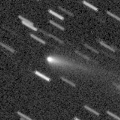
|
It brightened up to 14.6 mag from autum to winter (Dec. 2, Kunihiro Shima). Now it is fading. It has already faded down to 16.3 mag (Jan. 5, E. Bryssinck). It will be fainter than 18 mag in March.
Date(TT) R.A. (2000) Decl. Delta r Elong. m1 Best Time(A, h)
Jan. 28 4 7.90 31 16.8 2.312 2.901 117 17.0 19:37 ( 0, 86)
Feb. 4 4 11.85 31 1.2 2.421 2.926 111 17.1 19:14 ( 0, 86)
|
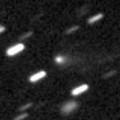
|
Now it is 16.1 mag (Dec. 30, Yuji Ohshima). In the Northern Hemisphere, it will be observable at 17 mag in excellent condition in winter. It locates low in the Southern Hemisphere.
Date(TT) R.A. (2000) Decl. Delta r Elong. m1 Best Time(A, h)
Jan. 28 6 46.59 34 41.6 2.557 3.443 149 17.0 22:15 ( 0, 90)
Feb. 4 6 43.92 34 26.7 2.617 3.452 142 17.0 21:45 ( 0, 89)
|
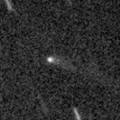
|
Now it is 17.2 mag (Jan. 8, D. Buczynski). It was observed at 17 mag last winter. It will be observable at 17 mag again next winter. It is observable in good condition in the Northern Hemisphere. But it locates low in the Southern Hemisphere.
Date(TT) R.A. (2000) Decl. Delta r Elong. m1 Best Time(A, h)
Jan. 28 11 26.65 29 24.9 3.212 4.024 140 17.1 2:58 ( 0, 84)
Feb. 4 11 25.08 31 16.7 3.195 4.049 145 17.1 2:29 ( 0, 86)
|

|
Now it is 18.2 mag (Dec. 6, T. Ikemura, H. Sato). It was expected to be observable at 17 mag in good condition in winter. But actually, it is fainter than this ephemeris.
Date(TT) R.A. (2000) Decl. Delta r Elong. m1 Best Time(A, h)
Jan. 28 12 49.73 -1 10.3 2.011 2.599 116 17.2 4:21 ( 0, 54)
Feb. 4 12 50.80 -0 46.8 1.958 2.629 123 17.2 3:55 ( 0, 54)
|
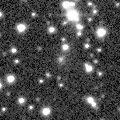
|
It will pass the perihelion in 2019. However, it has not been brightening since the discovery in 2010. Now it is 17.1 mag (Jan. 4, T. Ikemura, H. Sato). It keeps observable in excellent condition in the Northern Hemisphere. It is not observable in the Southern Hemisphere.
Date(TT) R.A. (2000) Decl. Delta r Elong. m1 Best Time(A, h)
Jan. 28 3 42.75 61 11.5 9.113 9.545 113 17.2 19:12 (180, 64)
Feb. 4 3 42.00 60 57.9 9.175 9.526 108 17.2 18:57 (176, 64)
|
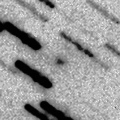
|
Now it is 17.2 mag (Dec. 30, A. Diepvens). In the Northern Hemisphere, it is observable at 17-18 mag until March. It is not observable in the Southern Hemisphere.
Date(TT) R.A. (2000) Decl. Delta r Elong. m1 Best Time(A, h)
Jan. 28 18 34.08 56 52.6 1.859 1.942 79 17.2 5:34 (222, 41)
Feb. 4 18 33.41 60 31.0 1.819 1.960 83 17.2 5:30 (217, 44)
|

|
It brightened up to 8-9 mag from winter to spring in 2016. Now it is fading. It has already faded down to 17.1 mag (Dec. 6, T. Ikemura, H. Sato).
Date(TT) R.A. (2000) Decl. Delta r Elong. m1 Best Time(A, h)
Jan. 28 13 12.29 -13 57.3 4.492 4.856 105 17.3 4:44 ( 0, 41)
Feb. 4 13 9.70 -14 29.3 4.438 4.913 113 17.4 4:14 ( 0, 40)
|

|
It has not been observed yet in this apparition. It will brighten up to 12 mag in summer. It will be observable in excellent condition in the Southern Hemisphere. It locates somewhat low in the Northern Hemisphere.
Date(TT) R.A. (2000) Decl. Delta r Elong. m1 Best Time(A, h)
Jan. 28 16 44.15 -30 58.9 3.074 2.633 54 17.6 5:34 (325, 14)
Feb. 4 16 57.27 -31 27.3 2.970 2.604 59 17.3 5:30 (327, 15)
|
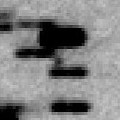
|
Now it is 17.7 mag (Jan. 7, Mt. Lemmon Survey). It will be observable at 17.5 mag in good condition from winter to spring.
Date(TT) R.A. (2000) Decl. Delta r Elong. m1 Best Time(A, h)
Jan. 28 14 37.94 -9 33.2 2.136 2.319 87 17.4 5:34 (348, 45)
Feb. 4 14 46.03 -10 6.9 2.064 2.332 92 17.4 5:30 (353, 45)
|

|
Now it is 17.3 mag (Jan. 8, CAO, San Pedro de Atacama). It is observable at 17.5 mag in good condition in this winter in the Southern Hemisphere.
Date(TT) R.A. (2000) Decl. Delta r Elong. m1 Best Time(A, h)
Jan. 28 6 14.81 -44 38.3 3.429 3.860 108 17.5 21:42 ( 0, 11)
Feb. 4 6 6.10 -42 3.7 3.442 3.860 107 17.5 21:06 ( 0, 13)
|

|
It brightened up to 6.2 mag in June in 2016 (June 24, Marco Goiato). Now it is fading. It has already faded down to 17.1 mag (Jan. 6, B. Lutkenhoner, W. F. Cashwell). In the Southern Hemisphee, it keeps observable in excellent condition after this. It keeps low in the Northern Hemisphere.
Date(TT) R.A. (2000) Decl. Delta r Elong. m1 Best Time(A, h)
Jan. 28 15 2.48 -34 6.9 3.970 3.847 75 17.7 5:34 (347, 19)
Feb. 4 14 58.88 -34 27.8 3.911 3.918 83 17.8 5:30 (353, 20)
|
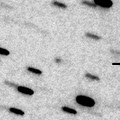
|
Now it is 18.9 mag (Dec. 27, K. Hills). It is observable at 18 mag in good condition from January to March.
Date(TT) R.A. (2000) Decl. Delta r Elong. m1 Best Time(A, h)
Jan. 28 10 48.96 -7 34.7 2.342 3.155 139 17.8 2:21 ( 0, 47)
Feb. 4 10 45.63 -8 0.3 2.306 3.173 146 17.8 1:50 ( 0, 47)
|
|
![]()
 C/2011 KP36 ( Spacewatch )
C/2011 KP36 ( Spacewatch ) 93P/Lovas 1
93P/Lovas 1 65P/Gunn
65P/Gunn 81P/Wild 2
81P/Wild 2 43P/Wolf-Harrington
43P/Wolf-Harrington C/2015 VL62 ( Lemmon-Yeung-PanSTARRS )
C/2015 VL62 ( Lemmon-Yeung-PanSTARRS ) 71P/Clark
71P/Clark 144P/Kushida
144P/Kushida C/2015 O1 ( PanSTARRS )
C/2015 O1 ( PanSTARRS ) C/2016 N4 ( MASTER )
C/2016 N4 ( MASTER ) 74P/Smirnova-Chernykh
74P/Smirnova-Chernykh C/2014 B1 ( Schwartz )
C/2014 B1 ( Schwartz ) C/2014 W2 ( PanSTARRS )
C/2014 W2 ( PanSTARRS ) C/2016 B1 ( NEOWISE )
C/2016 B1 ( NEOWISE ) C/2013 US10 ( Catalina )
C/2013 US10 ( Catalina ) C/2015 TQ209 ( LINEAR )
C/2015 TQ209 ( LINEAR ) C/2015 V1 ( PanSTARRS )
C/2015 V1 ( PanSTARRS ) C/2016 A1 ( PanSTARRS )
C/2016 A1 ( PanSTARRS ) C/2014 OE4 ( PanSTARRS )
C/2014 OE4 ( PanSTARRS ) C/2016 M1 ( PanSTARRS )
C/2016 M1 ( PanSTARRS ) C/2014 R3 ( PanSTARRS )
C/2014 R3 ( PanSTARRS ) C/2013 V4 ( Catalina )
C/2013 V4 ( Catalina ) 56P/Slaughter-Burnham
56P/Slaughter-Burnham P/2015 TP200 ( LINEAR )
P/2015 TP200 ( LINEAR ) C/2015 X7 ( ATLAS )
C/2015 X7 ( ATLAS ) 118P/Shoemaker-Levy 4
118P/Shoemaker-Levy 4 C/2010 U3 ( Boattini )
C/2010 U3 ( Boattini ) C/2016 T2 ( Matheny )
C/2016 T2 ( Matheny ) C/2014 S2 ( PanSTARRS )
C/2014 S2 ( PanSTARRS ) 213P/Van Ness
213P/Van Ness 94P/Russell 4
94P/Russell 4 C/2017 A3 ( Elenin )
C/2017 A3 ( Elenin ) C/2013 X1 ( PanSTARRS )
C/2013 X1 ( PanSTARRS ) 330P/2015 U1 ( Catalina )
330P/2015 U1 ( Catalina )![]()








































